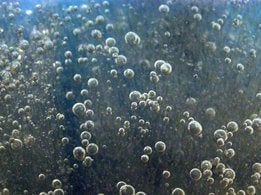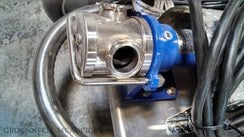The answer is, alas, a little cagey. He would reply, “Do you want it carbonated? If so, carbonate it.” It’s that simple.
We feel that the decision to carbonate mead is very much a matter of preference. At Groennfell Meadery we like our mead carbonated, so we carbonate everything we make. Super simple.
Just because it’s a simple question doesn’t mean we can’t give a complicated answer, though…
Since yeast produces Carbon Dioxide (CO2) and alcohol during fermentation, your mead will initially have some level of dissolved CO2 in very low quantities. Usually it’s just carbonated enough to be irritating. We refer to this low level CO2 as effervescence.
To have still mead (sometimes called Honey Wine), we have to find a way to remove this CO2 in a process known as degassing. This can be achieved through re-racking (transferring it between vessels numerous times), filtration, or agitation.
To have carbonated mead we need to find a way to increase the CO2 and keep it in solution. There are essentially two ways to do this: harness the CO2 producing power of yeast or put the CO2 in via a compressed air cylinder.
In the first case, we package the mead in pressure safe containers (beer bottles, kegs, champagne bottles, etc.) and add a known amount of sugar – usually in the form of honey – and allow the yeast to ferment it in the confined space of the bottle. With nowhere else to go, our CO2 stays in solution and makes your mead fizzy. This will only work if you still have viable yeast in your mead. (In case you were curious, to legally be labeled and sold as “sparkling,” this must be the technique used by a meadery, though it needn’t be labeled as bubbly at all.)
In the second case, the mead is held in a large pressure safe container (a keg, conical fermenter, bright tank, etc.) and CO2 is pumped into the liquid from a CO2 tank. The mead is then either distributed straight from the tank or is bottled under conditions which will keep the carbonation in solution. (This can legally be labeled and sold as “carbonated” if the meadery wants to do so.)
So, there you have it. Nothing is quite as easy as it seems in mead making. The effects of carbonation on your mead will have to wait for another blog post.






